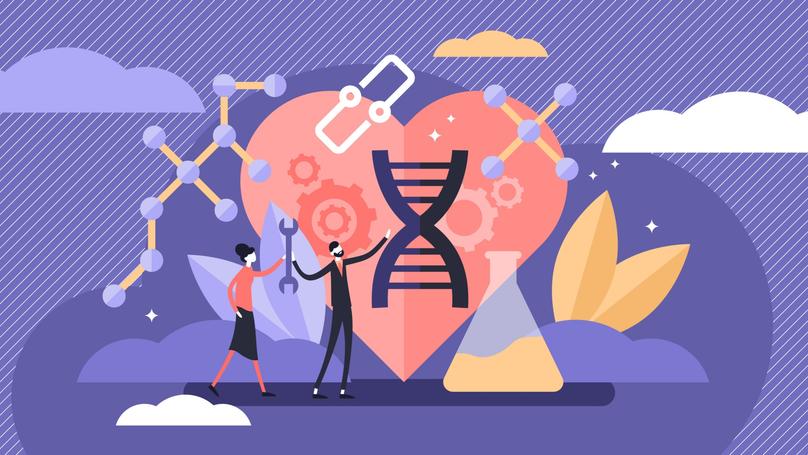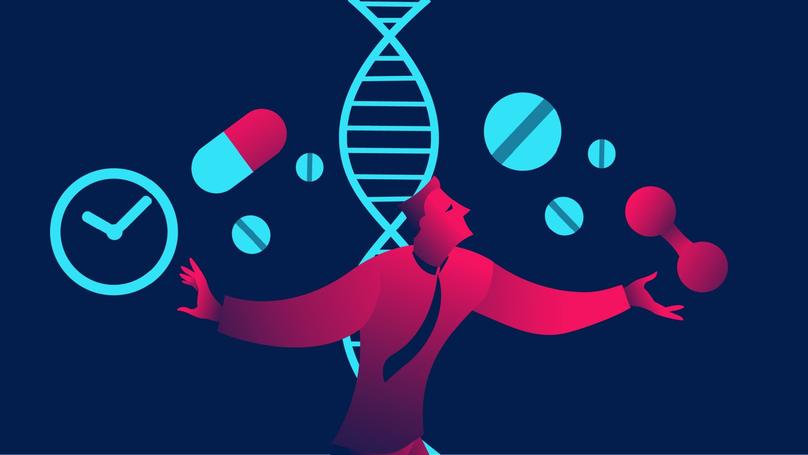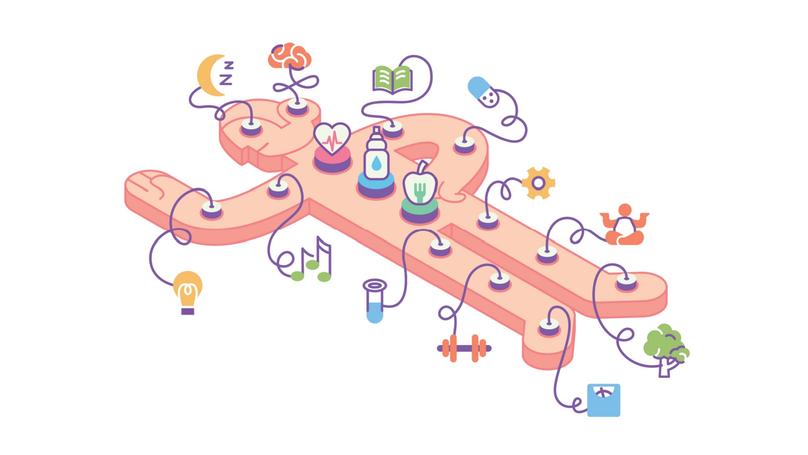Biohacking

What is Biohacking?
Biohacking is called one of the most popular trends in leading a healthy lifestyle, weight loss, medicine, and cosmetology. So, biohacking is a whole set of unique methods and techniques used literally to "hack" your own body. For example, biohacking can increase the length and quality of life, slow aging, speed up metabolism, weight loss, stimulate brain activity, increase concentration, etc. In other words, biohacking allows you to improve the body's performance and, as a result, ensures longevity.
In biohacking, the human body and all biological processes are compared to an operating system, which is necessary to control a computer and run various programs. Accordingly, your body is the same system that needs to be optimized, improved, and protected from external influences.
Even though biohacking has only become popular in the last few years, the term has been around since the 1980s. However, biohackers were then called genetic engineers who did not belong to any officially recognized scientific school and conducted independent experiments. Later, in the early 2000s, biohacking was first discussed as an opportunity to study genome editing and correction. It is how enthusiastic molecular biology researchers, in particular genetic codes, came to be. However, knowledge of biohacking techniques will be helpful for specialists in various fields: doctors, psychologists, fitness trainers, and cosmetologists.
Nowadays, the aim of biohacking is to maximize the human body's possibilities, perfect the organism, and improve its functions. Biohacking uses various tools and approaches to achieve this goal.
Types of Biohacking
Depending on the tools and techniques used, biohacking involves several approaches. The first one is called a grinder, and its adherents are called "cyborgs among humans." They transform their bodies with the help of implanted biochips or implants. Microdevices record and then broadcast various biometric data, such as glucose levels, heart rate, blood pressure, and so on, to external screens. This way, we can always stay in touch with our bodies and monitor processes previously beyond our control. It is believed that a few weeks after introducing such an electronic device into the body, people perceive the environment differently and process information from the outside world in a new way.
Another biohacking approach is called "nutrigenomics." This field of knowledge explores how food and nutrition affect the functions and capabilities of our body. It is a field of knowledge that explores how food and nutrition affect our bodies' functions and capabilities. According to the latest data in this field, the need for personalized nutrition is increasing, and Nutrigenomics is being actively developed and studied. It can improve well-being and support healthy lifestyles by restoring microflora and gut function and detecting possible predispositions to metabolic, eating, and brain disorders.
The third biohacking technique is DIY biology, or "hands-on" biology. Proponents of this method popularise science and conduct experiments at home, sharing their experiences and valuable secrets to create an alternative to modern scientific laboratories. Most adherents of the DIY-biology theory study sciences related to the storage, transmission, and realization of genetic information. In other words, bio-enthusiasts study genetic codes, for example, by isolating plant and animal nucleic acids and building sophisticated medical equipment such as amplifiers, centrifuges, and other devices for DNA and RNA detection outside professional laboratories.
There are many more areas of biohacking, but all the others are ancillary or complementary to the three critical varieties listed above. The choice in favor of one or the other variety of biohacking depends on the primary goal that the individual is pursuing. For example, a biohacker may seek to speed up their metabolism, lose weight, slow aging, be more productive, feel better, and be more alert throughout the day. It is best to use separate biohacking tools for each of these cases.
What other areas does biohacking address, and what tools does it use?

The concept of biohacking also touches on areas of human functioning such as:
-
Sleep patterns.
-
Physical activity and sport.
-
Nutrition, diets, special diets.
-
Mental health and mental balance.
-
Taking supplements, vitamins, and medicines.
The most ardent biohacking enthusiasts have a range of tools for the complex improvement of their organism and its functions to increase productivity and labor efficiency. In addition to the chipping as mentioned above and implants, there are:
-
Biostimulating substances have biological activity and, when injected into the human body, have a particularly stimulating effect on metabolic processes and regeneration. They also have anti-inflammatory effects.
-
Neurostimulation is one method of treating pain and some movement disorders. It uses low-voltage electrical spinal cord stimulation to block pain sensations and restore motor functions.
-
Medical devices to monitor health conditions such as blood glucose levels, blood pressure, heart function, and epilepsy seizure control.
-
Fitness trackers track the distance traveled, calories burned, and heart rate.
Moreover, biohacking actively uses dangerous prescription drugs called "smart pills." They are taken for cognitive and mental disorders to treat symptoms such as ADHD, depression, and other mental disorders. These same drugs are consumed in biohacking to increase concentration, improve memory, and stimulate brain function. Nootropics (brain supplements) also have a significant impact on brain efficiency. Like smart pills, however, they are only sold with a doctor's prescription, as they have side effects and can be addictive. However, nootropic components can be in biologically active supplements, herbal preparations, and remedies with amino acids.
Is Biohacking Safe?
It is essential to clarify that biohacking is aimed at the informed and sensible use of such substances. Biohackers also actively practice meditation and relaxation, using mindfulness and mnemotechnics.
Nevertheless, almost all biohacking trends get criticized by the scientific community and are viewed skeptically, at the very least. This is because biohacking mainly poses a particular danger for beginners, and the incorrect, inexperienced, or careless use of its methods can have serious health consequences. Furthermore, enthusiastic biohackers may cause environmental damage, e.g., by generating dangerous artificial microorganisms.
Therefore, it is vital to approach biohacking cautiously, relying solely on science-based information and, if necessary, consulting with experts in a particular field of medical knowledge.
Is Biohacking Illegal?

The legality of the biohacking concept depends entirely on the methods used and the specific actions taken by the bio-enthusiast. They act within the law if they are not harming the environment or other people by using only the above biohacking tools.
However, some regulations restricting biohackers do appear. In June 2019, the California state government passed the first law in the United States against one of the trends of biohacking-the practice of self-editing genes. This means that the independent alteration and modification of the genetic material of living cells is prohibited within the state.
The FDA (Food and Drug Administration), an agency of the U.S. Department of Health and Human Services, also expresses dissatisfaction with other individual practices, such as "rejuvenation" through blood transfusions and the same sale of CRISPR kits for experiments in molecular biology. Simultaneously, the best biohacking tools, such as vitamin supplements, personalized diets, meditation, and other scientifically proven ways to stay young and prolong life, remain available.
Examples of Biohacking
One of the first biohackers is American physicist Rob Carlson. At the end of the last century, he became so interested in molecular biology that he recreated a real laboratory in his garage to study nucleic acids and macromolecules. Moreover, in 2005, Carlson wrote an article for the popular science magazine Wired titled "The era of garage biology has arrived," outlining his main ideas and research results.
However, the American entrepreneur Dave Asprey is one of the most famous biohackers. He has already spent over a million dollars on biohacking, all to live for at least one hundred and eighty years. The businessman is already fifty years old but firmly convinced that his longevity is assured. All thanks to products of his production, for example, Bulletproof Coffee, which adds butter or coconut oil to improve concentration, prevent age-related diseases, and promote weight loss.
Modern biohackers are also working on creating universal methods for implanting subcutaneous electronic microdevices. For instance, the recognized Finnish master of body modifications, Samppa von Cyborg, is working on inventing unique implants that can connect to Wi-Fi networks and other smart chips that will allow the control of various other devices by the mere power of thought.
American programmer and biohacker Amal Graafstra implanted special RFID chips in his hands in 2005 to interact with technology without contact. This eliminated the need to carry keys and remember passwords. Graafstra believes there is no need for additional devices when you can implant them into your body.
Moreover, over the last few years, entire communities of biohackers have been created, working together to develop biotechnology and improve methods of "hacking" human organisms to achieve longevity and enhance the quality of life. One such organization is DIYbio. It was founded by Jason Bobe from Harvard Medical School, and web developer Mackenzie Cowell from Cambridge. DIYbio members now support the open knowledge exchange between professional scientists and bio-enthusiasts, thus contributing to the popularisation of science. The California-based Counter Culture Labs community is also doing the same. For example, one of their projects aims to produce and synthesize insulin that will be more accessible to diabetic people worldwide.
Best Biohacking Books

Before you start practicing biohacking, you should read more about the history and techniques of this trend. The best biohacking books include:
1. Brain Body Diet: 40 Days to a Lean, Calm, energized, and Happy Self.
The book by writer and doctor of preventive medicine Sarah Gottfried is a detailed guide to healthy living. It contains instructions to improve work efficiency, concentration, and memory functions. The book also tells you how to improve your quality of life through a balanced diet, exercise, sleep hygiene, and work-life balance.
2. Smarter Not Harder: The Biohacker's Guide to Getting the Body and Mind You Want
The already mentioned Dave Asprey is a Silicon Valley investor, biohacker, and writer who outlines the most advanced methods that will tell readers how to work more productively and utilize the full potential of their bodies. The author pays due attention to the proper organization of the workspace, healthy nutrition, and the need for sports, meditation, and breathing practices.
3. Boundless. Upgrade Your Brain, Optimize Your Body, and Defy Aging.
As the author Ben Greenfield notes, this book is "a complete guide to optimizing the human body, mind, and spirit, free of fluff and other nonsense, but only clean, workable and practical content." The book does contain Greenfield's most influential and personally tested tools for building the perfect body, getting rid of stress and anxiety, and improving memory and cognitive abilities.
4. Keep Sharp: Build a Better Brain at Any Age.
American neurosurgeon and author Sanjay Gupta's book focuses on continuously improving cognitive skills through sports and physical activities such as yoga, breathing, and meditation. The author proves through his medical practice that these activities help maintain emotional stability, fight symptoms of depression, and resist dementia.
5. "The Autoimmune Solution."
Author and functional medicine doctor Amy Myers offers practical guidance for immune support and the prevention of various diseases. The ways outlined by Myers have been medically tested and scientifically proven. Moreover, the author also offers a proven 30-day program to restore the body and combat possible triggers.
Conclusions
Biohacking as one approach to your health can positively impact your quality of life, productivity, well-being, and outlook. However, it is essential to recognize that more significant body interventions, such as chipping or implantation, require special care and supervision by medical professionals. Therefore, it is preferable to use safe biohacking tools, such as supplements, breathing practices, physical activity, and proper nutrition, with the advice of a nutritionist. It will both bring you tangible benefits and prevent you from harming yourself or the world around you.























